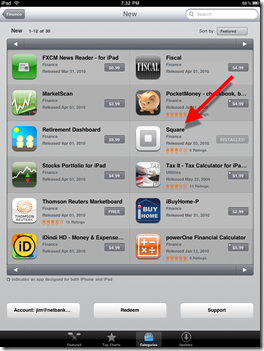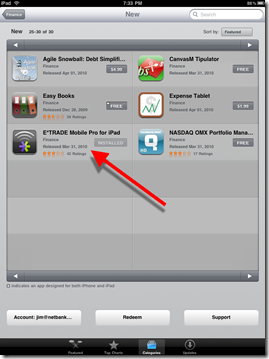This is a guest post from John Fishback of 154 Consulting — the firm that helps us coach the innovative fintech companies selected for Finovate on their demos.

The demo from SimpliFi at FinovateStartup09 (video here) is a great example of a company clearly communicating why their product is important. CEO Brian Link and COO Bill Grizack used their seven minutes to the fullest and showed off the best of Simplfi’s features. Their demo never felt rushed, and it made a huge impact on the audience (they were one of the best of show award winners).
Brian and Bill generated that impact by focusing on who they are as a company and why the marketplace needs SimpliFi. You can see evidence of that throughout this demo, but focus on Brian’s first minute.
He opens simply:
“Good afternoon. My name is Brian Link and this is Bill Grizack; we’re the co-founders of SimpliFi, a free online financial planning and advice service for middle class consumers.
SimpliFi is based in the technology hotbed of Winston-Salem, North Carolina.“
Here, SimpliFi clears the first hurdle of any demo: can you say what your product does in a sentence? Brian’s simple introduction is the best way to start. We don’t need to know more about his background, or Bill’s, at least not at this point. That SimpliFi is in Winston-Salem is not “need to know” information, but it is a point of differentiation with many of the day’s other presenters.
It’s in what comes next that the SimpliFi demo really shines. Brian does what too many demos fail to do at all, let alone right up front. He puts SimpliFi in the context of the industry:
“Before we start the demo I just want to say that I think we can all agree that we’ve seen some really terrific budgeting and PFM tools demoed here today. In fact, we’re going to see another one here in a couple of minutes, Rudder.
These guys are doing some really great work, and I think if it’s possible they’ve actually made budgeting cool again in America.
But with all due respect, we don’t think budgeting is the biggest issue for the average American.
We think it’s planning.“
This is clever positioning. While personal financial management (PFM) dominates the casual observer’s understanding of the online financial services space because of major players like Mint and Wesabe, there are many PFM services in the marketplace. It is hard for a new PFM to stand out. Were Brian to open with a statement like “SimpliFi is a budgeting and planning tool. . .” (and indeed, at a later Finovate event, SimpliFi unveiled PFM functionality), the audience could be forgiven for thinking “It’s just another PFM.”
Instead, Brian groups all PFM services together as addressing the same problem, and then positions SimpliFi as addressing an entirely different problem. If your company or product is often compared to an only superficially similar company or product, this approach can pay huge dividends. Rather than explaining all of the differences in functionality or technology, which may not matter to or resonate with your audience, focusing on the different problem or question you address, or the unique way you do so, can help make your value clear.
By this point in the demo, only seconds in and before we’ve even begun looking to the screen, we know basically what SimpliFi is. We also understand that SimpliFi is focused on planning, not budgeting. Now we’re wondering how important the difference between planning and budgeting is.
Brian tells us, with a stunning statistic:
“Consider this stat: Less than 5 percent of Americans have a written financial plan, but those that do are 250 percent more likely to achieve their goals.
The only difference is having a plan.“
We’re still under a minute in to the SimpliFi demo, and the audience now knows what SimpliFi is, how it’s different, and most importantly, that SimpliFi’s approach (planning) is spectacularly successful compared to what 95 percent of us do. That doesn’t just seem important; it is important, and it catches the audience’s attention for the remainder of the demo.
Brian and Bill do a lot of things well during the remainder of their demo. Note particularly how closely the on-screen navigation matches what Brian is saying. But their job is made easy from this point forward, because we already understand what makes SimpliFi important. All they need show is that their tool works, which they easily do in their time remaining.
By putting Simplfi in the context of the industry and by articulating its importance early, Brian and Bill both helped the audience understand SimpliFi’s importance and they made their own work for the rest of the demo easier.
Other companies can learn from SimpliFi’s introduction. The constraints of Finovate’s special format (fast-paced 7-minute demos rather than long slide presentations) make knowing and explaining clearly why your product matters critically important.

This is a guest post from John Fishback. John is the principal of 154 Consulting and directs 154’s Financial Services Product Group, which combines message development and presentation advice services with financial services industry experience to help financial services companies, startups, and vendors develop and market products that speak clearly to customers’ needs. He can be reached at [email protected].



























